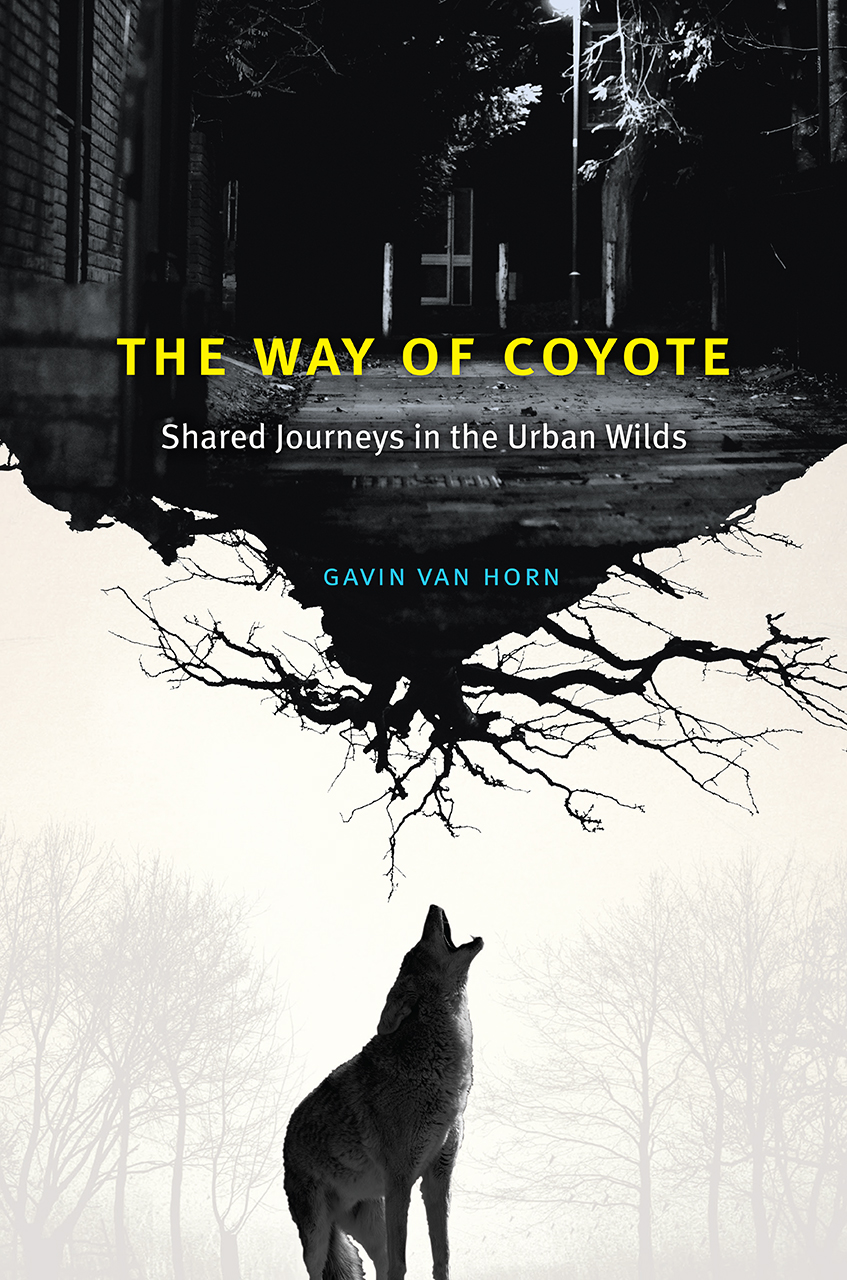Readers expecting a detailed account of urban coyotes may be surprised by Gavin Van Horn’s new book. The Way of Coyote blends memoir and ecological research in a work of creative non-fiction that explores Chicago’s wilderness and how we live alongside it. The beauty and wonder of urban nature are treated in much the same style as traditional, wilderness-focused nature writing, and Van Horn acknowledges on the first page that his “Plan A” was to live in a cabin somewhere with no cell reception. That plan fell through, however, and instead of lions or wolves, Van Horn finds beauty in the birds and butterflies that call Chicago home.
While it may not be as obvious as in a national park, Chicago does not lack for nature, and not just typical urban survivors like pigeons and the book’s titular coyotes. Falcons nest on skyscrapers, beavers swim the Chicago River, and minks make their homes among dumped TVs. Van Horn’s book takes the form of a series of essays, each focused on one of these natural features of the city. He works at the Center for Humans and Nature, a local nonprofit focused on conservation ethics, but he saves the philosophical discussion of conservation for the end of the book. First, he needs to show that there’s something worth conserving.
These essays take a variety of topics, ranging from Van Horn’s personal encounters to retellings of times he tagged along with a local scientist. These conversations with experts showcase the variety of research—volunteers monitoring peregrines, camera traps in pocket parks for whatever wanders past—on urban wildlife currently underway in Chicago, and serve to demystify the occasionally arcane world of ecology. A conversation about camera traps, for instance, can only be so academic when the setting is lunch at a suburban Chinese restaurant instead of a conference. These conversations often emphasize how these animals pop up at the margins of everyday life, a feature of the city we would notice often if we only stopped to look.
The book concludes with a call to create an “urban land ethic.” The idea of a “land ethic” comes from naturalist Aldo Leopold’s 1949 book A Sand County Almanac. The concept refers to an ethical framework guiding human interactions with the land, and with the animals and plants that live on it. Leopold’s book took a similar form to Van Horn’s, a series of essays exploring the natural world around his home in rural Wisconsin, culminating in an essay exploring the new concept of a land ethic.
Since Leopold’s book was published, America has experienced an urban revolution. In 1950, more than a third of Americans lived in rural areas, and around one in five worked on a farm. In the 2010 census, for the first time ever, fewer than one in five lived in a rural area, and less than two percent worked on a farm. Leopold acknowledged that the most serious challenge to his land ethic was the increasing number of people “separated from the land by many middlemen, and by innumerable physical gadgets.” While Leopold still ranks with Rachel Carson among the most influential environmental writers, the world he wrote about is increasingly unrecognizable.
As a guide for city dwellers, Leopold’s book needs a few updates. Van Horn attempts to provide those additions, drawing on three characters to inform his new vision of coexistence with nature: Leopold, the Chinese philosopher Lao Tzu, and Coyote, a trickster spirit common in several Native American mythologies.
At the center of Van Horn’s urban land ethic is the idea of reconciliation ecology. This term was coined by ecologist Michael Rosenzweig in his book Win-Win Ecology, and the basic premise comes across in the title: by creating habitat for animals in places where people live, the theory goes, we’re able to create homes for wildlife without going so far as to try to turn downtown Chicago back into a swamp. With just a few tweaks to how we live, we can create room for wildlife in places built for humans.
In his conclusion, Van Horn refers to the idea of “micro-rewildings,” small-scale efforts to invite nature back into the city. Planting native flowers or using fewer pesticides may seem like a tiny step, but it’s the beginning of reimagining cities as a place “responsive to the lands, waters and skies that supply its lifeblood,” he writes. By inviting animals to live among us and accepting that their needs are not at odds with ours, our shared urban habitats can become a better place to live for humans and non-human animals alike.
Perhaps more important than the individual bees and butterflies is the shift in priorities that these “rewildings” represent. Leopold claimed that “a land ethic changes the role of Homo sapiens from conqueror of the land-community to plain member and citizen of it.” By adapting parts of the urban environment to suit the needs of animals, we do more than just create habitat. Instead of treating the prairie as a blank canvas for industry, as Chicago’s early founders did, we see the prairie as a place worth preserving. We come to view ourselves as citizens of the same ecosystem as the animals around us, our fates tied up in theirs. Wildlife has adapted in order to live alongside us. We would do well to return the favor.
Gavin Van Horn will read from The Way of Coyote and discuss his work with fellow author Matt Stansberry at City Lit Books, 2523 N. Kedzie Blvd., on Thursday, November 29, at 6:30pm. Free. citylitbooks.com
Gavin Van Horn, The Way of Coyote: Shared Journeys in the Urban Wilds. $25. University of Chicago Press. 224 pages.
Sam Joyce is a contributing editor at the Weekly. He last wrote for the Weekly about ecological restoration at Indian Ridge Marsh.

